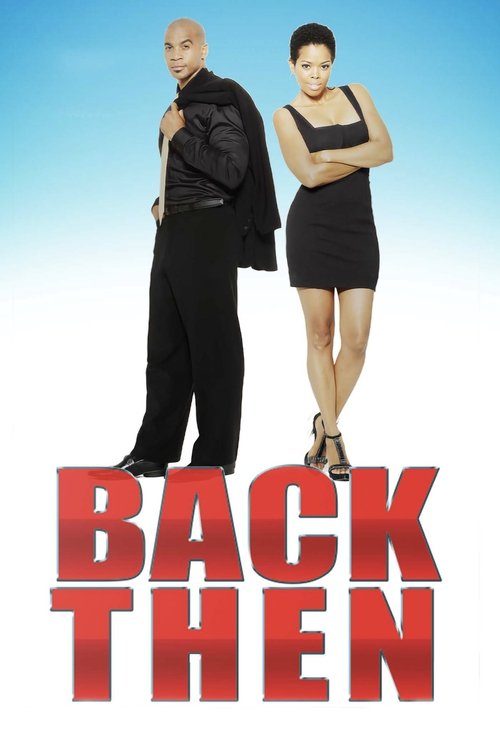
Ask Your Own Question
What is the plot?
What is the ending?
In the ending of "Back Then," the main character, Alex, confronts his past and the choices he made that led to his current life. He reconciles with his estranged father, leading to a moment of emotional catharsis. Meanwhile, his love interest, Sarah, decides to pursue her dreams, ultimately leaving their small town. The film concludes with Alex standing at a crossroads, symbolizing his newfound understanding and acceptance of his life choices.
As the final act unfolds, the scene opens with Alex sitting alone in his childhood bedroom, surrounded by remnants of his past. The walls are adorned with posters of his teenage dreams, but the air is thick with regret. He stares out the window, lost in thought, as the sun begins to set, casting a warm glow that contrasts with his internal turmoil. The camera lingers on his face, capturing the weight of his decisions and the longing for something more.
In the next scene, Alex receives a phone call from his father, who he hasn't spoken to in years. The conversation is tense at first, filled with unspoken words and unresolved feelings. Alex's voice trembles as he grapples with anger and hurt, but as the dialogue progresses, he begins to express his feelings. The emotional stakes rise as they both confront their past mistakes. The scene is punctuated by silence, allowing the audience to feel the gravity of their reconciliation. By the end of the call, there is a sense of tentative hope; they agree to meet.
The following scene shifts to a local diner, where Alex and his father sit across from each other. The atmosphere is heavy with anticipation. They share stories, laughter, and tears, slowly bridging the gap that years of silence had created. Alex's father apologizes for his absence, and Alex, in turn, acknowledges the pain he felt growing up without him. This moment of vulnerability is pivotal, showcasing their growth and the possibility of forgiveness.
Meanwhile, Sarah is seen packing her belongings in her apartment. She looks around, reminiscing about the memories they shared. A montage plays, showing her moments with Alex, filled with laughter and love, but also the struggles they faced. As she closes the last box, she receives a text from Alex, inviting her to meet one last time before she leaves town. The scene captures her internal conflict; she knows she must follow her dreams, but her heart is still tethered to Alex.
In the final meeting between Alex and Sarah, they meet at their favorite spot by the river. The sun is setting, casting a golden hue over the water. They sit in silence for a moment, both aware that this is a goodbye. Alex expresses his pride in Sarah for pursuing her dreams, while Sarah admits that leaving is harder than she thought. Their conversation is filled with bittersweet nostalgia, as they reflect on their relationship and the love they shared. The emotional weight of their parting is palpable, and they share a heartfelt embrace, knowing that their paths are diverging.
As the film draws to a close, Alex stands alone at the crossroads of his life, symbolizing his acceptance of the past and the uncertainty of the future. He watches Sarah drive away, a mix of sadness and hope in his eyes. The camera pulls back, revealing the vast landscape before him, representing the possibilities that lie ahead. The screen fades to black, leaving the audience with a sense of resolution and the understanding that while the past shapes us, it does not define our future.
In summary, Alex reconciles with his father, leading to a moment of emotional healing, while Sarah chooses to pursue her dreams, leaving their small town behind. The film ends with Alex at a crossroads, symbolizing his acceptance of his life choices and the hope for new beginnings.
Is there a post-credit scene?
In the movie "Back Then," produced in 2012, there is indeed a post-credit scene that adds an intriguing layer to the narrative.
As the credits roll, the screen fades to black before transitioning to a dimly lit room filled with old photographs and memorabilia. The camera slowly pans across the walls, revealing snapshots of the main characters at various stages of their lives, hinting at the passage of time and the memories they've created.
Suddenly, the focus shifts to a single photograph resting on a table. It features the protagonist, Alex, as a child, laughing with a friend. The sound of a door creaking open interrupts the silence, and a figure enters the room. It's an older version of Alex, now reflecting on his past with a bittersweet smile.
He picks up the photograph, his expression shifting from nostalgia to contemplation. The weight of his choices and the impact of his past decisions are evident in his eyes. As he places the photo back down, he glances at a nearby window, where the sun is setting, casting a warm glow across the room.
In this moment, the audience senses a profound realization within Alex; he understands that while the past shapes who we are, it is the present and future that hold the power to change our narrative. The scene closes with him turning away from the window, a determined look on his face, suggesting that he is ready to embrace whatever comes next.
This post-credit scene encapsulates the film's themes of reflection, growth, and the enduring influence of memories, leaving viewers with a sense of hope and possibility.
What role does the town's annual festival play in the story?
The annual festival serves as a backdrop for key moments in the film, symbolizing both the passage of time and the community's traditions. It becomes a pivotal setting for Sam and Lily's reconnection, where they confront their feelings amidst the festivities, highlighting the contrast between their past and present.
What motivates the main character, Sam, to return to his hometown?
Sam is driven by a mix of nostalgia and unresolved issues from his past. He feels a deep sense of longing for the relationships he left behind, particularly with his childhood friend, Lily. As he navigates his memories, he grapples with feelings of regret and the desire to reconnect with his roots.
How does the relationship between Sam and Lily evolve throughout the film?
Initially, their relationship is strained due to years of separation and unspoken feelings. As they spend time together, old memories resurface, and they confront their past. Their bond deepens as they share their struggles and dreams, leading to a poignant realization of their love for each other.
What internal conflicts does Sam face upon returning home?
Sam struggles with feelings of inadequacy and guilt over leaving his hometown. He is haunted by memories of his childhood and the choices he made that led him away. This internal conflict manifests in his interactions with old friends and family, as he seeks validation and a sense of belonging.
How does the character of Sam's father influence his journey?
Sam's father represents both a source of inspiration and a point of contention. Their strained relationship adds layers to Sam's emotional journey, as he seeks approval and understanding. The father's expectations weigh heavily on Sam, pushing him to confront his own identity and the legacy he wishes to create.
Is this family friendly?
"Back Then," produced in 2012, is a film that explores themes of nostalgia, family dynamics, and personal growth. While it has a heartfelt narrative, there are several aspects that may be considered objectionable or upsetting for children or sensitive viewers.
-
Emotional Turmoil: The film delves into complex family relationships, including themes of loss, regret, and reconciliation. Characters experience significant emotional distress, which may be intense for younger audiences.
-
Conflict and Tension: There are scenes of conflict between family members that may include raised voices and arguments, reflecting the struggles of communication and understanding within the family unit.
-
Depictions of Loss: The film touches on the theme of loss, which may involve discussions or flashbacks related to deceased family members. This could be upsetting for children or those sensitive to the topic of death.
-
Mature Themes: The narrative includes mature themes such as betrayal and the impact of past decisions on present relationships, which may be difficult for younger viewers to fully comprehend.
-
Visuals of Sadness: Certain scenes may visually depict sadness or despair, such as characters crying or looking forlorn, which could evoke strong emotional reactions.
Overall, while "Back Then" offers valuable life lessons and emotional depth, its exploration of heavy themes may not be suitable for all children or sensitive viewers.

















